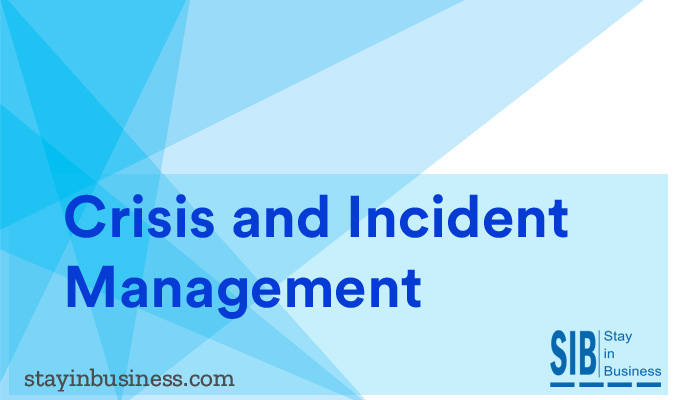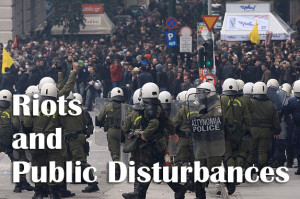
Crisis and incident management are two aspects of BCDR. While many people use these two terms interchangeably, they are as dissimilar as apples and oranges and need to be clearly distinguished. Although both are closely related, each has a different purpose and objective. Hence, it is imperative for a BCDR professional to be clear on their crisis and incident management definitions.
What is an Incident Management Plan
Incident management plans let you tackle all critical incidents that disrupt normal activity and allow you to return business operations to normalcy. This can be achieved by preparing an incident response plan for all possible incidents that have the potential to create an operational outage, stall production and cause the company significant damages and loss.
Critical incident management need not necessarily be only about dealing with disasters such as snowstorms, earthquakes, floods or tornadoes. Their scope can also cover hazards such as computer glitches, viruses, power outages and insufficient supplies of vital raw materials due to labor strikes or price fluctuations. Incident management plans, therefore, focus on disruptions that have financial implications and can hamper customer goodwill. They provide a framework for action by detailing the staff’s response to the disruption and coordinating recovery team efforts that are at the forefront of recovery strategy.
An incident management plan is deployed when a disruption in production or business activity is reported and ends when the crisis has been successfully tackled and normal operations resume.
Benefits of Having an Incident Management Plan
- A command center for deploying plans and assessing impacts
- Gain a panoramic perspective on all possible impacts
- Plan, develop, manage, review and improve recovery procedures
- Detect vulnerabilities through visually enhanced analytics
- Take advantage of an integrated management solution
How an Incident Management Plan can Optimize Your Response Capability
- Status Updates – Monitor all tasks in progress in real time from a central dashboard
- Streamlined Coordination – Efficiently manage interdependent incident management tasks between different teams and departments
- Protect Revenue Generation – Improve your recovery time frames and restore operations faster
- Safeguard Reputation and Brand Perception – Incident management plans lend precision and accuracy to all emergency related communications, both internally and externally
What is a Crisis Management Plan?
During a crisis scenario, the reputation of an organization may be adversely affected. A crisis may occur due to a variety of reasons, not necessarily due to an incident. It could be sparked off by rumors or even due to mishandling a customer’s complaint. In these days of social media, an irate customer can severely damage an organization’s brand equity. Customer goodwill can be lost quite easily.
On the other hand, a crisis could also be triggered by an incident. The prime focus should be for the organization to have a consensus on a suitable course of action and not to give conflicting information. Therefore, procedures for crisis management should be clearly defined
Though Crisis Management and incident management plans are distinct and different, they do have overlapping segments and workflows. Hence, procedures and plans must be developed separately but should still have the flexibility needed to be coalesced into one consolidated plan, if required. Both Crisis Management and Incident Management plans must have the following:
- Each of the two plans must have its own clearly defined areas of responsibility that match but are separate, so that there are no overlapping or conflicting roles and responsibilities
- The protocol involved in invoking and setting in motion each plan should be clearly defined. Only authorized personnel with the necessary permissions should be allowed to activate the plan
- The roles and responsibilities for each individual in both teams should be clearly defined
- If possible, both plans – the crisis management and the incident management plan – should be tested simultaneously. This will help all participants to clearly understand their roles and responsibilities as per the plan. Another advantage is that any problem or interference between the two plans can be detected and corrected immediately
- The entire staff in the organization should be familiarized with all the tasks and activities carried out as part of both these plans. This will ensure clarity on what each member has to do during a crisis and the entire organization can collectively mount a recovery effort
Conclusion
It might be tempting for the management to merge both plans and teams in order to cut down on costs and manpower. But sooner or later, this could lead to numerous ambiguities that can be quite confusing to decipher, especially in the middle of a crisis when time is of the essence. Rigorous planning, decisive execution and detailed testing – crucial elements of any crisis or incident management plan for business – become possible when both the plans are kept separate, albeit with some overlapping workflows. This in turn leads to an efficient response to an incident, a crisis or a combination of both.





